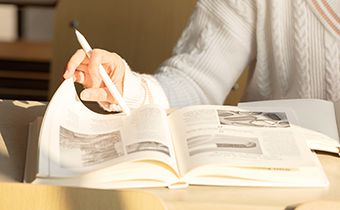中考英语二轮复习讲练动词主谓一致
每个老师需要在上课前弄好自己的教案课件,是认真规划好自己教案课件的时候了。必须要写好了教案课件计划,未来的工作就会做得更好!究竟有没有好的适合教案课件的范文?以下是小编收集整理的“中考英语二轮复习讲练动词主谓一致”,供您参考,希望能够帮助到大家。
中考英语二轮复习讲练动词主谓一致
有关动词的重点:只有动词才能作谓语。动词分为行为动词、系动词、助动词和情态动词等。
(一)联系动词:be,become(成为),turn(变颜色),grow(变天气),look,smell,taste,
sound(good√,well×),seem,feel。
(二)有关use的词组:①usedtodo过去常常作,beusedtodoing习惯于。
1.---MyauntgoestoclimbmountGueverySunday.
---Oh!Butshehateclimbingmountain.
A.usedtoB.usetoC.usestoD.isusedto
2.Lileiisusedtogettingearly.
注意:usedtodo的否定式为usednottodo或didn’tuseto
疑问式为:Didsbuseto?或usedsb…?
②人+usesthfordoing=人+usesthtodo用某物做…
其被动形式为:物+beusedtodo=物+beusedfordoing
Peopleusestoneforbuildinghouses=Peopleusestonetobuildhouses.
Stoneisusedforbuildinghouses=Stoneisusedtobuildhouses.
(三)can’t表示“不可能”即否定性推测。mustn’t禁止、不可能;
must“一定”表示肯定性推测;must引起的问句,其否定回答为needn’t.
1.ThemanbeLiLei.LiLeihasgonetoBeijing.
A.can’tB.mustn’tC.maynotD.needn’t
2.Alotofcarsarecomingandgoing.Yougoacrossthestreet.
A.needn’tB.maynotC.mustn’tD.must
3.MustIreturnthebooktomorrowmorning?No,you.Youkeepitforthreedays.
A.mustn’t,mayB.mustn’t,mustC.needn’t,canD.needn’t,may
4.---Look!Themanatthegatebeourheadmaster.Heisalwaysstandingthereevery
morning.---No,itbehim.Heisholdingameetingintheofficenow.
A.must,can’tB.must,mustn’tC.can,can’tD.can,mustn’t
(四)及物动词与介词搭配:give,show,pass,lend+物+to+sb=give(…)sbsth
make,sing,buy+物+for+sb=make(sing,buy)sbsth
(五)及物动词+副词结构,构成的动词短语的宾语是人称代词时,把代词放中间
get(it)back,put(it)on,take(it)off,turn(it)on,pick(it)up,try(it)on,
look(it)up,wake(me)up,put(it)up.
1.Smokingisbadforyourhealth.You’dbetter.
A.giveupitB.giveitupC.takeoutitD.takeitout
基础知识:情态动词:
(一)can:①表能力“能,会”;②表推测“可能”;③表允许“可以”。
1.---youpassmeapen?I’dliketowritedownthephonenumber.---Sure,Hereitis.
A.CanB.NeedC.MightD.Must
(二)could:can的过去式,表过去的能力。但could本身也可作情态动词,表委婉请求。
(三)may:①允许“可以”;②表推测“可能”。
1.IswimwhenIwastenyearsold.
2.Johngotherewithastonight,butheisnotverysureaboutit.
A.mustB.canC.willD.may
(四)must:①主观看法“必须”;②推测“一定”。
(五)need:①情态动词:need+动原②实义动词:needtodo③needdoing=needtobedone
1.Youworryaboutme.It’snothingserious.
A.can’tB.mustn’tC.needn’tD.won’t
(六)情态动词的被动态:情态动词+be+过分
(七)maybe和maybe①maybe用于句首,可能;②maybe可能是
1.Ifyoueatbadfood,youill.A.maybeB.can’tbeC.mustD.maybe
练习
1.---Mayweplayfootballinthestreet?---No,you.It’sdangerous.
A.canB.mustn’tC.mayD.maynot
2.ThemanintheofficebeMr.Blackbecausehewenthomejustnow.
A.mustn’tB.maynotC.can’tD.needn’t
3.Theoldmanwasquiteweakaftertheaccident.Sohe.
A.mustbetakecareofB.musttakecareofC.mustbelookedafter
4.Tomakeourcitymorebeautiful,rubbishintotheriver.
A.needn’tbethrownB.mustn’tbethrownC.can’tthrowD.maynotthrow
5.---Hurryup,please!---It’squiteearly,youworryaboutthetime.
A.mustn’tB.maynotC.needn’tD.can’t
6.---There’ssomebodyatthedoor.Whoitbe?
---No,itbehim.It’sjustseveno’clock.It’stooearly.
A.may,can’tB.will,won’tC.may,mustn’t
7.---Excuseme,couldIborrowsomemoneyfromyou?---Ofcourseyou.
A.couldB.canC.mustD.need
8.Theflowereveryday,orthey’lldie.
A.mustwaterB.canbewateredC.shouldwaterD.mustbewatered
9.---WhatdidyourPEteachersayaboutyourhighjumpatthesportsmeeting.
---HesaidthatIbetter.A.candoB.amC.willdoD.coulddo
10.---Where’sLucy?---I’mnotsure.Sheinthelibrary.
A.maybeB.mustC.maybeD.willbe
主谓一致即谓语动词的数与主语的单复数一致:
(一)One,everyone,eachone,anyone,each,either,nineof+复数+单谓。
Everyoneofthestudentsisstudyinghard.Neitherofthegirlsisabletoanswerit.
1.Neitherofthetwobrotherswiththeirparents.
A.liveB.arelivingC.liketoliveD.lives
2.oftheboysinClass4isplayinggames.
A.AllB.EachC.Theboth
(二)不定式、动名词作主语时,谓语用单数
Toteachistolearn.Playingwithfireisdangerous.
1.PalyingbaseballDale’sfavouritesport.A.isB.areC.were
(三)主语后跟含有with.except.together.with.aswellas等短语时,单复数应根据主语而定,而不受这些短语的影响。
1.EveryoneexceptTomandJohntherewhenthemeetingbegan.
A.areB.isC.wereD.was
(四)主语为people.Police.cattle(家禽)poultry(家畜)等时,谓语用复数。
Thepolicearelookingforthemissingchild.Mostpeoplethinkso.
(五)主语为复数而意义为单数,谓语用单数:
①news,works(作品,工作),physics,politic政治,mathematics数学,谓语用单数;
②trousers,Shoes,glasses为主语时,谓语用复数,当前面有apairof修饰时,谓语动词用单数。
1.Ithinkphysicsmaths.A.issousefulasB.aremoreusefulas
C.areasusefulasD.ismuchmoreusefulthan
(六)表示时间、长度、价格、质量等短语做主语时,即使其中的名词为复数名词,谓语动词也应用单数形式:
Threeyearshasalreadypassedquickly.
Fiftyyuanisenough.
(七)由every,some,any,no构成的复合不定式代词做主语时,谓语用单数。
1.EverygirltoattendtheEnglishParty.
A.wishB.wishesC.islikeD.like
(八)就近原则:由either…or,Neither…nor,notonly…butalso连接两个并列主语时,谓语动词与靠近它的主语一致。
1.Notonlystudentsbutalsotheirteachertheplan.
A.objectB.objectsC.isobjectD.isobjected
Therebe句型中连接并列的主谓时,谓语用就近原则。
Thereisagirlandfourboysintheroom.
2.TheresomeChineseandthreeAmericansinthetravellingteam.
A.areB.isC.hasD.have
(九)so,neither倒装句:sodoI句型(即so+be/助动词/情态动词+主语),表示“两种情况相同”。注意:时态和数要一致。
SoIdo陈述语序,表示“的确如此”。
Neither/Nor+be/助动词/情态动词+主语,表示“两种情况都不”
1.---Tomboughtacomputeryesterday.---Soshe.(sohe)
2.---Theboydidn’tgotothePark.---Neither(nor)I.
(十)由and连接两个不同的单数名词或代词作主语时,表示不同概念时,谓语动词用复数;而表示同一概念时,谓语动词用单数。
JackandTomlookheathyandstrong.
Thepoetandmusicianvisitsourschooltoday.
(十一)the+姓氏s表示“一家人”,谓语动词用复数。
TheBlacksenjoyworkinginChina.
(十二)anumberof+名复+复谓表示“很多”;
thenumberof+名复+单谓表示“…的数目”。
Thenumberofpeopleinvitedmorethan200,andanumberofthembeenherenow.
A.were,hasB.were,haveC.was,hasD.was,have
练习
1.NeitherWeiHuanorAnn________ontheteam.
A.isB.areC.goesD.go
2.“Ithinkneitherthisshirtnorthatone________good”,hesaid.
A.areB.isC.wereD.was
3.ThisisMissGao.She________yournewteacher.
A.beB.amC.isD.are
4.Hisparents________comingtomeettheteachertonight.
A.areB.wereC.is
5.Howmuchmilk________inthebottle?
A.hasB.arethereC.isthere
6.EveryoneexceptTomandJohn________therewhenthemeetingbegan.
A.isB.wasC.areD.were
7.________Lily________Lucymaygowithyoubecauseoneofthemmuststayathome.A.Notonly;butalso
B.Neither;nor
C.Both;and
D.Either;or
8.________thepopulationofChina?
A.Howmuchis
B.Howmanyare
C.Whatis
D.Whatnumberis
9.Jennyandherparents________goingtovisitthePalaceMuseumtomorrowA.isB.amC.areD.be
10.Neitherthestudentsnortheteacher________intheclassroomthemoment.
A.wereB.wasC.werentD.wasnt
11.—Howmanystudentsarethereinyourschool?
—________thestudentsinourschool________overtwothousand.
A.Thenumberof;is
B.Thenumberof;are
C.Anumberof;is
D.Anumberof;are
12.—Arethetwinsonthefootballteam?
—No,neitherofthem________ontheteam.
A.isB.areC.wereD.be
13.EitherBoborPeter________watchingthe17thWorldCupnow.
A.isB.areC.amD.be
英语主谓一致考查题例答案与详解
1.A。neither...nor...连接两个并列主语时,应根据“就近一致”的原则,谓语动词的数与nor后面的词语相一致。
2.B。同上。
3.C。主语为单数第三人称。
4.A。一般现在时,主语为复数。
5.C。主语是不可数名词,动词用单数第三人称形式。
6.B。主语是everyone,且为一般过去时。
7.D。根据句子的意思是“两者之一”故选D。
8.C。某地区和国家的人口是单数第三人称,表示一事物。
9.C。主语为复数。
10.B。neither…nor采取就近原则,故用单数,且用肯定式。
11.A。表示“……的数量”应用thenumberof,谓语动词用单数第三人称形式;而anumberof表示“许多,大量的”。
12.A。同1题。
13.A。采用就近原则。
相关知识
中考英语二轮复习讲练动词时态语态
中考英语二轮复习讲练动词时态语态
动词分类:实义动词、系动词、助动词、情态动词;八大时态
时态:注意:①由谓语动词表示时态;②用时间状语或副词决定时态
形式:一般现在时Weworkhard.一般过去时Weworkedhard.一般将来时We’llworkhard.现在进行时We’reworkinghard.现在完成时We’reworkedhard.过去进行时Wewereworkinghard.过去将来时Wewouldworkhard.过去完成时Wehadworkedhard.
(一)一般现在时:表客观规律,在条件、时间状语从句中表将来。
1.标志:often、always、sometimes、usually、every(day、week)
2.谓语动词:原形或谓语动词+s/es(主语三单)
3.助动词:do、does。
加s/es规则:①一般加s,如:plays;②以s、x、sh、ch结尾的+es;辅音字母+o+es;如:dodoes;teachteaches;pushpushes;③辅+y将y变i+es。
1.Marryisoftenathomeatweekendsandtimetohergarden.
A.givesB.gaveC.hadgivenD.hasgiven
2.---What’swrongwiththeorange?---It’sterrible.
A.istastingB.istastedC.tastesD.tasted
(二)一般过去时:①谓语动词+ed;②助动词用did。
标志:yesterday、last、week、in1990、threeyearsago、atthattime。
加ed规则:①一般加ed;②以不发音e结尾+d;如:encourageencouraged;
③以辅音+y将y变i+ed,如:crycried;④双写:stopstopped;prefer;shop。
1.---WhatdidyoudoonMayDay?
---Iwentshoppingwithmyfamily.Theresomanypeopleinthestreet.
A.wasB.areC.were
2.Thedoctoraboyyesterday.
A.hadsaved,dyingB.saved,deadC.hassaved,deadD.saved,dying
3.Againandagainthedoctorthecrying,buthecouldn’tfindoutwhatwaswrongwithher.
A.lookedoverB.lookoverC.lookedforD.lookedout
重要知识点:
1、has/havebeento有去有回has/havegoneto有去无回
---Hello!MayIspeaktoyourfather?---Sorry,heHangzhou.
A.hascometoB.hasbeentoC.hasbeeninD.hasgoneto
---ShehastoShanghaitwice.
2、现在完成时标志:just、never、ever、before、yet、already、for、since
注意:yesterday、lastweek、twodaysago用于过去时
Since……ago用于现在完成时
Ihaveneverseenthefilmbefore.Fatherboughtthatwatchtwodays.
现在完成时:出现forsince时,主句用持续性动词
注:终止性动词变成延续性动词:die---bedeadleave---beawaystart---beon
Join---beinarrive---behave/beinbuy---haveborrow---keep
---I’msorrytokeep.youwaiting.---Oh,notatall.Ihereonlyafewminutes.
A.havearrivedB.havebeenC.arrived
3、主动结构表变动:①open,sell,read,write,wash,drive等及物动词用作不及物动词时,主语是物时,用主动语态表被动。
Thecardriveswell.Thisbooksellswell.Thepenwriteswell.
②look,taste,smell,sound,feel等连系动词表被动
Thesongsoundswonderful.Thefoodtastesgood.
③beworthdoing值得做Thestoryisworthreading.
④want,need,require做需要讲时,用动ing表被动=tobedone
Thebikeneedsrepairing.=Thebikeneedstoberepaired.
4、spend、cost、take、pay区别:人+spend+时间(in)doing=Ittake(took)sbsth(sometime)todo花……时间做……
物+costsb+钱=人+spend+钱+onsth=人+pay+钱+forsth花钱买某物
---Mymotherusuallymuchtimeshoppinginthesupermarket.
A.spendB.costsC.takesD.pays
5、leavesth+地点把某物留在某地forgettodo忘记做……
forgetdoing忘记做过某事
---Whydon’tyouhaveanotebookwithyou?---I’veitathome.
A.lostB.forgottenC.leftD.found
6、wear表状态beinhaveon表状态puton动作dressoneself为某人穿衣
---Thechildisn’toldenoughtohimself.A.wearB.putonC.haveD.dress
基础知识:
1、过去进行时:was/were+动ing过去的时间点
①atteno’clockyesterdayatfivelastSunday
②when+go过去时(终止动词)
注意:whenwhile
用法:主句+(过去进行时)+when+一般过去时;
主句+(过去进行时或一般过去时)+while+过去进行时。
---Lookoutwhenyouthestreet.
A.crossingB.arecrossingC.cross
---Don’twakehimupifheat7:00tomorrowmorning.
A.isstillsleepingB.sleepingC.sleepsD.willsleep
---Herbrotherwhilehehishorseandhislegbroken.
A.fell,wasridingB.fill,rideC.hadfallen,wasriding
---HesaidtheyChinaforJapan.
A.wereleavingB.areleavingC.willleave
2、过去将来时:
①would+动词原形②常用于主句是过去时的宾语从句中
③也可用was/weregoingto+动词原形表示:
---Whatdidtheteachersayjustnow?---Hesaidthattheearthroundthesun.
A.goB.goesC.wentD.willgo
---Hesaidthathewouldcallyouifhe.
A.hadreturnedB.wouldreturnC.returnedD.returns
3、过去完成时:
①had+过去分词②bytheendof+过去时间when+过去时句子
---Whenwegottothecinema,thefilmforhalfanhour.
A.hadbeenonB.hadbegunC.wasonD.begun
---Bytheendoflasttern,meover3000words.
A.learnedB.hadlearnedC.haslearnedD.islearning
4、被动语态:
①主语常是物②be+过去分词③各种时态被动态
一般现在时:is,am,are+过去分词
一般过去时:was/were+过去分词
一般将来时:willbe+过去分词
情态动词:情态动词+be+过去分词
1.Thesun________intheeast.
A.isalwaysrisingB.alwaysisrisingC.risesalwaysD.alwaysrises
2.Heoften________hisclothesonSundays.
A.washingB.washesC.haswashedD.wash
3.I’mJapanese.Where________from?
A.doyoucomeB.youarecomingC.youcomeD.areyoucoming
4.Amotherwho________hersonwilldoeverythingforhishappiness.
A.islovingB.lovesC.lovedD.hasloved
5.________atahighertemperaturethanwater?
A.HasmilkboiledB.IsmilkboilingC.DoesmilkboilD.Wasmilkboiling
6.Hesignedtouswithhishand,“Thelessonisover.You________.”
A.dismissedB.aredismissedC.havedismissedD.weredismissed
7.Ihaven’tmethimforages,buthismother________himsometimes.
A.hadstillseenB.stillseesC.hasstillseenD.stillsaw
8.Wewillstartassoonasourteamleader________.
A.comesB.willcomeC.comeD.iscoming
9.IthinkJack________theanswer.
A.hasknownB.doesknowC.isknowingD.knows
10.Myfather________Georgequitewell;theywereintroducedataparty.
A.isknowingB.wasknowingC.knowsD.hadbeenknowing
11.Where________?
A.MaryworksB.worksMaryC.doesMaryworksD.doesMarywork
12.Ithinkthisquestion________toanswer.
A.easyB.iseasyC.waseasyD.BothAandB
13.________oilorbutterwhenyoucookit?
A.DoyouuseB.DidyouuseC.WereyouusingD.Haveyouused
14.I________somenewspaperatsevenyesterdayevening.
A.amreadingB.readC.wasreadingD.willread
中考英语二轮复习讲练冠词
中考英语二轮复习讲练冠词
有关冠词的重要考点:
(一)冠词:an用于原因音标开头的单词或字母前,anegg,anapple,an“s”。
特殊:ausefulbook,auniversity,anumbrella,anhonestboy,anhour.
冠词a,用在辅音音标开头的单词或字母前。如:adesk,a“b”。
1.There’s“h”intheword“hour”.A.aB.theC.anD./ww.zk5u.com
2.MikeisAmericanboy.HestudiesinuniversityinLanzhou.
A.the,aB.a,aC.an,aD.an,an
(二)定冠词:the用于乐器前,用在复数姓氏前表示某某夫妇,用在最高级前。
1.BlacksareonvisittotheGreatwall.A./,aB.A,theC.The,aD.The,/
2.Thisisoneofinterestingbooksonyoursubject.
A.mostB.themostoftheC.themostD.mostofthe
(三)so与such用法:such+a(an)+形+名=so+形+a(an)+名“如此…以致”
当名词被such,so,many修饰时,“a”用在这些词后。
1.---Didyouseethefootballmatchlastnight?---Yes,Ihaveneverseenexcitingmatchbefore.A.suchaB.soaC.suchanD.soan
2.Ihaveneverseenwonderfulpicture.A.suchaB.suchanC.soaD.such
(四)序数词前加the表示“第几”,加a表示“又、再”
1.Inordertomakeitclear,Imustgouptosecondfloorandaskhimsecondtime.
A.the,aB.a,theC.the,theD./,the
基础知识:
(一)不定冠词a,an用法:
1.用于单数可数名词前表类别;Anelephantisheavierthanahorse.
2.用于第一次提到的可数名词前;Sheworksinabank.
3.用于序数词前;
4.“一”的概念,没有one强烈;Itisafootlong,aninchthick.
5.与a构成的固定词组;abit,alittle,alotof,inahurry,goforawalk,haveagoodtime,
haveacold,havearest,anumberof,withasmile,afew,amomentlater.
(二)定冠词:the的用法
1.特指人、物;ThemaninawhitecarisLinTao’sfather.
2.第二次提到;IhaveabikeandIlikethebikeverymuch.
3.说话人、听话人都知道的人、物;Let’sgototheclassroom.
4.独一无二的名词前;thesun.
5.用在序数词、形容词最高级、only修饰的名词前;Heistheyoungestmanofthefour.
6.用于海洋、湖泊、江河、山脉、沙漠等专有名词前;theYellowRiver.
7.用于姓氏前;
8.用于某些形容词前表一类人;theold,theyoung,therich,thepoor.
9.用于乐器前;playthepiano.
10.固定词组;inthemorning(afternoon,evening),atthebeginning,intheend,ontheleft,
ontheright,inthefrontof,inthemiddleof,atthefootofthehill,bytheway.
(三)不用冠词情况:
1.名词前有指示代词、物主代词即this,that,those,these,my,some,any等修饰时;
2.复数名词表类别;Dogsarefriendlytopeople.
3.星期、月份、季节、节日前;ItisSundaytoday.TodayisMother’sDay.
4.球类、三餐前;playfootball.Havelunch.
5.固定词组;athome,bytrain,gotoschool,gotowork,gotobed,ontime,intime,atnoon,introuble,infact,intown.
(四)有无定冠词的区别:atschool上学,attheschool在学校里,attable在吃饭,atthetable在桌旁,inbed(睡、病、躺)在床上,inthebed(某物)在床上,inhospital住院,inthehospital在医院里,infrontof在…前面(外部),inthefrontof在…前面(内部),gotoschool去上学,gototheschool到学校去。
练习
1.June1stisChildren’sDay.A.theB.anC.aD./
2.---What’sthematterwithyou?---Icaughtbadcoldandhadtostayinbed.
A.a,/B.a,theC.a,aD.the,the
3.sunisbiggerthanearth.A.A,theB.A,anC.The,anD.The,the
4.DoesTomoftenplayfootballafterschool?A./,/B./,theC.the,/D.a,a
5.womanoverthereispopularteacherinourschool.A.A,anB.The,aC.The,the
6.ThescientistsfromUnitedStateslivesinNinthstreet.A.the,theB./,theC./,/D.the,/
7.oldbookonthechairisusefulbook.A.The,anB.The,aC.The,the
8.MybrotherlikesplayingbasketballandIamgoodatplayingpiano.
A./,theB.the,/C.an,theD.the,a
中考英语语法考点知识复习:动词主谓一致
2012年中考英语考点21动词主谓一致
有关动词的重点:只有动词才能作谓语。动词分为行为动词、系动词、助动词和情态动词等。
(一)联系动词:be,become(成为),turn(变颜色),grow(变天气),look,smell,taste,
sound(good√,well×),seem,feel。
(二)有关use的词组:①usedtodo过去常常作,beusedtodoing习惯于。
1.---MyauntgoestoclimbmountGueverySunday.
---Oh!Butshe________hateclimbingmountain.
A.usedtoB.usetoC.usestoD.isusedto
2.Lileiisusedtogettingearly.
注意:usedtodo的否定式为usednottodo或didn’tuseto
疑问式为:Didsbuseto?或usedsb…?
②人+usesthfordoing=人+usesthtodo用某物做…
其被动形式为:物+beusedtodo=物+beusedfordoing
Peopleusestoneforbuildinghouses=Peopleusestonetobuildhouses.
Stoneisusedforbuildinghouses=Stoneisusedtobuildhouses.
(三)can’t表示“不可能”即否定性推测。mustn’t禁止、不可能;
must“一定”表示肯定性推测;must引起的问句,其否定回答为needn’t.
1.Theman_______beLiLei.
LiLeihasgonetoBeijing.
A.can’tB.mustn’tC.maynotD.needn’t
2.Alotofcarsarecomingandgoing.You_______goacrossthestreet.
A.needn’tB.maynotC.mustn’tD.must
3.MustIreturnthebooktomorrowmorning?No,you_______.You_______keepitforthreedays.
A.mustn’t,mayB.mustn’t,mustC.needn’t,canD.needn’t,may
4.---Look!Themanatthegate_______beourheadmaster.Heisalwaysstandingthereevery
morning.---No,itbehim.Heisholdingameetingintheofficenow.
A.must,can’tB.must,mustn’tC.can,can’tD.can,mustn’t
(四)及物动词与介词搭配:give,show,pass,lend+物+to+sb=give(…)sbsth
make,sing,buy+物+for+sb=make(sing,buy)sbsth
(五)及物动词+副词结构,构成的动词短语的宾语是人称代词时,把代词放中间
get(it)back,put(it)on,take(it)off,turn(it)on,pick(it)up,try(it)on,
look(it)up,wake(me)up,put(it)up.
1.Smokingisbadforyourhealth.You’dbetter_______.
A.giveupitB.giveitupC.takeoutitD.takeitout
基础知识:情态动词
(一)can:①表能力“能,会”;②表推测“可能”;③表允许“可以”。
1.---youpassmeapen?I’dliketowritedownthephonenumber.---Sure,Hereitis.
A.CanB.NeedC.MightD.Must
(二)could:can的过去式,表过去的能力。但could本身也可作情态动词,表委婉请求。
(三)may:①允许“可以”;②表推测“可能”。
1.IswimwhenIwastenyearsold.
2.Johngotherewithastonight,butheisnotverysureaboutit.
A.mustB.canC.willD.may
(四)must:①主观看法“必须”;②推测“一定”。
(五)need:①情态动词:need+动原②实义动词:needtodo③needdoing=needtobedone
1.Youworryaboutme.It’snothingserious.
A.can’tB.mustn’tC.needn’tD.won’t
(六)情态动词的被动态:情态动词+be+过分
(七)maybe和maybe①maybe用于句首,可能;②maybe可能是
1.Ifyoueatbadfood,youill.A.maybeB.can’tbeC.mustD.maybe
练习
1.---Mayweplayfootballinthestreet?---No,you.It’sdangerous.
A.canB.mustn’tC.mayD.maynot
2.ThemanintheofficebeMr.Blackbecausehewenthomejustnow.
A.mustn’tB.maynotC.can’tD.needn’t
3.Theoldmanwasquiteweakaftertheaccident.Sohe.
A.mustbetakecareofB.musttakecareofC.mustbelookedafter
4.Tomakeourcitymorebeautiful,rubbishintotheriver.
A.needn’tbethrownB.mustn’tbethrownC.can’tthrowD.maynotthrow
5.---Hurryup,please!---It’squiteearly,youworryaboutthetime.
A.mustn’tB.maynotC.needn’tD.can’t
6.---There’ssomebodyatthedoor.Whoitbe?
---No,itbehim.It’sjustseveno’clock.It’stooearly.
A.may,can’tB.will,won’tC.may,mustn’t
7.---Excuseme,couldIborrowsomemoneyfromyou?---Ofcourseyou.
A.couldB.canC.mustD.need
8.Theflowereveryday,orthey’lldie.
A.mustwaterB.canbewateredC.shouldwaterD.mustbewatered
9.---WhatdidyourPEteachersayaboutyourhighjumpatthesportsmeeting.
---HesaidthatIbetter.A.candoB.amC.willdoD.coulddo
10.---Where’sLucy?---I’mnotsure.Sheinthelibrary.
A.maybeB.mustC.maybeD.willbe
主谓一致即谓语动词的数与主语的单复数一致:
(一)One,everyone,eachone,anyone,each,either,nineof+复数+单谓。
Everyoneofthestudentsisstudyinghard.Neitherofthegirlsisabletoanswerit.
1.Neitherofthetwobrotherswiththeirparents.
A.liveB.arelivingC.liketoliveD.lives
2.oftheboysinClass4isplayinggames.
A.AllB.EachC.Theboth
(二)不定式、动名词作主语时,谓语用单数
Toteachistolearn.Playingwithfireisdangerous.
1.PalyingbaseballDale’sfavouritesport.
A.isB.areC.were
(三)主语后跟含有with.except.together.with.aswellas等短语时,单复数应根据主语而定,而不受这些短语的影响。
1.EveryoneexceptTomandJohntherewhenthemeetingbegan.
A.areB.isC.wereD.was
(四)主语为people.Police.cattle(家禽)poultry(家畜)等时,谓语用复数。
Thepolicearelookingforthemissingchild.Mostpeoplethinkso.
(五)主语为复数而意义为单数,谓语用单数:
①news,works(作品,工作),physics,politic政治,mathematics数学,谓语用单数;
②trousers,Shoes,glasses为主语时,谓语用复数,当前面有apairof修饰时,谓语动词用单数。
1.Ithinkphysics________maths.
A.issousefulasB.aremoreusefulas
C.areasusefulasD.ismuchmoreusefulthan
(六)表示时间、长度、价格、质量等短语做主语时,即使其中的名词为复数名词,谓语动词也应用单数形式:
Threeyearshasalreadypassedquickly.
Fiftyyuanisenough.
(七)由every,some,any,no构成的复合不定式代词做主语时,谓语用单数。
1.Everygirl________toattendtheEnglishParty.
A.wishB.wishesC.islikeD.like
(八)就近原则:由either…or,Neither…nor,notonly…butalso连接两个并列主语时,谓语动词与靠近它的主语一致。
1.Notonlystudentsbutalsotheirteacher________theplan.
A.objectB.objectsC.isobjectD.isobjected
Therebe句型中连接并列的主谓时,谓语用就近原则。
Thereisagirlandfourboysintheroom.
2.TheresomeChineseandthreeAmericansinthetravellingteam.
A.areB.isC.hasD.have
(九)so,neither倒装句:sodoI句型(即so+be/助动词/情态动词+主语),表示“两种情况相同”。注意:时态和数要一致。
SoIdo陈述语序,表示“的确如此”。
Neither/Nor+be/助动词/情态动词+主语,表示“两种情况都不”
1.---Tomboughtacomputeryesterday.---Soshe.(sohe)
2.---Theboydidn’tgotothePark.---Neither(nor)I.
(十)由and连接两个不同的单数名词或代词作主语时,表示不同概念时,谓语动词用复数;而表示同一概念时,谓语动词用单数。
JackandTomlookheathyandstrong.
Thepoetandmusicianvisitsourschooltoday.
(十一)the+姓氏s表示“一家人”,谓语动词用复数。
TheBlacksenjoyworkinginChina.
(十二)anumberof+名复+复谓表示“很多”;
thenumberof+名复+单谓表示“…的数目”。
Thenumberofpeopleinvitedmorethan200,andanumberofthembeenherenow.
A.were,hasB.were,haveC.was,hasD.was,have
练习
1.NeitherWeiHuanorAnn________ontheteam.
A.isB.areC.goesD.go
2.“Ithinkneitherthisshirtnorthatone________good”,hesaid.
A.areB.isC.wereD.was
3.ThisisMissGao.She________yournewteacher.
A.beB.amC.isD.are
4.Hisparents________comingtomeettheteachertonight.
A.areB.wereC.is
5.Howmuchmilk________inthebottle?
A.hasB.arethereC.isthere
6.EveryoneexceptTomandJohn________therewhenthemeetingbegan.
A.isB.wasC.areD.were
7.________Lily________Lucymaygowithyoubecauseoneofthemmuststayathome.A.Notonly;butalso
B.Neither;nor
C.Both;and
D.Either;or
8.________thepopulationofChina?
A.Howmuchis
B.Howmanyare
C.Whatis
D.Whatnumberis
9.Jennyandherparents________goingtovisitthePalaceMuseumtomorrowA.isB.amC.areD.be
10.Neitherthestudentsnortheteacher________intheclassroomthemoment.
A.wereB.wasC.werentD.wasnt
11.—Howmanystudentsarethereinyourschool?
—________thestudentsinourschool________overtwothousand.
A.Thenumberof;is
B.Thenumberof;are
C.Anumberof;is
D.Anumberof;are
12.—Arethetwinsonthefootballteam?
—No,neitherofthem________ontheteam.
A.isB.areC.wereD.be
13.EitherBoborPeter________watchingthe17thWorldCupnow.
A.isB.areC.amD.be
英语主谓一致考查题例答案与详解
1.A。neither...nor...连接两个并列主语时,应根据“就近一致”的原则,谓语动词的数与nor后面的词语相一致。
2.B。同上。
3.C。主语为单数第三人称。
4.A。一般现在时,主语为复数。
5.C。主语是不可数名词,动词用单数第三人称形式。
6.B。主语是everyone,且为一般过去时。
7.D。根据句子的意思是“两者之一”故选D。
8.C。某地区和国家的人口是单数第三人称,表示一事物。
9.C。主语为复数。
10.B。neither…nor采取就近原则,故用单数,且用肯定式。
11.A。表示“……的数量”应用thenumberof,谓语动词用单数第三人称形式;而anumberof表示“许多,大量的”。
12.A。同1题。
13.A。采用就近原则。
文章来源:http://m.jab88.com/j/89208.html
更多猜你喜欢
更多-
 中考英语二轮复习讲练动词时态语态 中考英语二轮复习讲练动词时态语态 动词分类:实义动词、系动词、助动词、情态动词;八大时态 时态:注意:①由谓语动词表示时态;②用时间状语或副词决定时态 形式:一般现在时Weworkhard.一般过去时...
中考英语二轮复习讲练动词时态语态 中考英语二轮复习讲练动词时态语态 动词分类:实义动词、系动词、助动词、情态动词;八大时态 时态:注意:①由谓语动词表示时态;②用时间状语或副词决定时态 形式:一般现在时Weworkhard.一般过去时... - 中考英语二轮复习讲练冠词 中考英语二轮复习讲练冠词 有关冠词的重要考点: (一)冠词:an用于原因音标开头的单词或字母前,anegg,anapple,an“s”。 特殊:ausefulbook,auniversity,anum... 小学英语复习课教案 05-03
- 中考英语语法考点知识复习:动词主谓一致 2012年中考英语考点21动词主谓一致 有关动词的重点:只有动词才能作谓语。动词分为行为动词、系动词、助动词和情态动词等。 (一)联系动词:be,become(成为),turn(变颜色),grow(变... 高中主谓一致教案 04-30
- 中考英语二轮复习讲练名词 中考英语二轮复习讲练名词 有关名词的重要考点: (一)名词作定语: 1.Tomisan(八岁大)boy. 2.Iwillhaveaholidaysoon. A.four-daysB.four-dayC... 小学英语复习课教案 05-03
最新更新
更多-
 Unit2DNA Unit2DNA 一.教学内容: Unit2DNALesson9—Lesson12 1.重点单词。 n.muledonkeyblueprint twincloneegg insect v.combin...
Unit2DNA Unit2DNA 一.教学内容: Unit2DNALesson9—Lesson12 1.重点单词。 n.muledonkeyblueprint twincloneegg insect v.combin... - Unit1YouCanWritePoetry Unit1YouCanWritePoetry 一.教学内容: Unit1YouCanWritePoetry (Lesson5~Lesson8) 1.重点单词: n.limerickblankmotio... 小学语文微课教案 05-03
- 2010年中考英语时态复习系列(六)现在完成时 2010年中考英语时态复习系列(六)现在完成时 现在完成时表示1)过去发生或已经完成的动作或存在的状态对现在造成的影响或结果.(即它的"完成用法")E.g.Ihavejustcleanedthecla... 小学六年级复习教案 05-03
- 2010中考英语复习计划 2010中考英语复习计划 九年级的这一学期是初中学习的最后一个学期,也是初中阶段最为关键的一个学期,我们除了要继续学习英语知识外,还要对已学习过的知识进行系统性的总复习,并参加初中毕业、升学统一考试。... 小学英语复习课教案 05-03
- 中考英语二轮复习讲练冠词 中考英语二轮复习讲练冠词 有关冠词的重要考点: (一)冠词:an用于原因音标开头的单词或字母前,anegg,anapple,an“s”。 特殊:ausefulbook,auniversity,anum... 小学英语复习课教案 05-03
- Chapter2Educationalvisits Chapter2Educationalvisits 一.教学内容: Chapter2EducationalvisitsLanguageandwriting (一)本章语法:虚拟语气 (二)写作练习 二... 小学语文微课教案 05-03
- 中考英语语法专题—冠词的用法2 中考英语语法专题—冠词的用法2 6、用于单数的可数名词前,代表一类人或东西 Thecarefulwritershouldavoidit.仔细的作家应避免这样做。 Thecompasswasin... 小学英语语法优秀教案 05-03
- 2010届中考英语语法基础3 语法基础-3副词的定义: 副词是一种用来修饰动词,形容词,副词或全句的词,说明时间,地点,程度,方式等概念。... 小学英语语法优秀教案 05-03
- 中考英语语法精讲例析名词 中考英语语法精讲例析名词 (一)知识概要 名词的概念在不同的语法教课书中有不同的解释和分类方法,但就实际应用来讲还是不要过分地追求其理论概念,而更多的要把注意力放在其应用上来。我们不妨把它分为两大类:... 小学英语语法优秀教案 05-03
热门推荐
- 人教版初中历史九年级上册《美国的独立》优秀教案
- 2011届中考英语动词语法复习
- 九年级英语上册第五单元重要知识点总结
- 《语文》八年级上册第四单元
- 用刻度尺测长度
- 初三化学第二节构成物质的基本微粒学案及训练题
- 2.1探索生命的器具(第二课时)
- 八年级数学《实数》教案
- 第22课 时代特点鲜明的明清文化(二):
- 生物与非生物
- 《物质的密度》教案
- 生物圈──所有生物的家园
- 《散步》课堂导学设计
- 九年级物理基本概念和原理
- 七年级历史下册《元朝的统治》教学设计评说
- 八年级生物上册《陆地生活的动物--兔》复习提纲(人教版)
- 七年级上册语文散文诗两首《金色花》创新教案
- 植物的生殖学案2(新人教版八年级生物下册)
